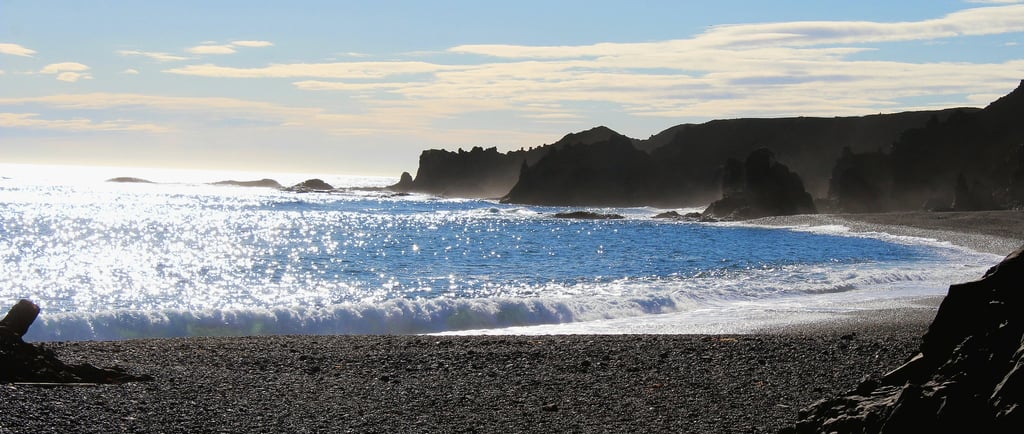What Makes Iceland’s Black Beaches So Special?
Iceland’s black beaches are special for their dramatic volcanic sand, striking landscapes, and rare natural beauty found nowhere else.
Vicky
7/2/20253 min read


What makes Iceland’s black sand beaches so unforgettable?
Born from ancient volcanic eruptions and sculpted by the relentless force of the North Atlantic, these surreal coastlines are some of the most dramatic natural wonders on Earth. With jet-black sands, towering basalt columns, crashing waves, and glacial ice shimmering on the shore, Iceland’s black beaches offer an experience that feels otherworldly. From the iconic Reynisfjara to the sparkling shores of Diamond Beach, this guide takes you through the most breathtaking black sand beaches in Iceland—what makes them unique, where to find them, and how to experience them at their best.
What Makes Iceland’s Black Sand Beaches So Unique?
Iceland’s black sand beaches are the dramatic result of volcanic power meeting Arctic elements. Unlike golden or white beaches formed by coral or shells, black sand comes from lava rock that has cooled rapidly after eruptions and broken into fine grains by wind and waves.
The stark contrast between the jet-black sands, roaring Atlantic surf, and often snow-covered backdrops makes these beaches feel otherworldly. Many are surrounded by basalt sea stacks, caves, or glacier-fed rivers, adding to their visual and geological uniqueness.
From a photographer’s dream to a geologist’s playground, Iceland’s black sand beaches are stunning, raw, and shaped by nature's extremes.
Top Black Beaches to Visit in Iceland
Iceland is home to several stunning black sand beaches, each with a unique landscape and experience. Here are the most famous ones you shouldn't miss:
1. Beach (South Coast)
Located near Vík, this is the most iconic black beach in Iceland. Known for its towering basalt columns, Reynisdrangar sea stacks, and dangerous sneaker waves, it’s both beautiful and awe-inspiring.
2. Diamond Beach (Jokulsarlon Glacier Lagoon)
Where glacial icebergs drift from the lagoon to the Atlantic and scatter across the black sand, creating a surreal sight that looks like diamonds on velvet.
3. Djupalonssandur (Snaefellsnes Peninsula)
A lesser-known gem with lava rock formations, shipwreck remains, and deep ties to Icelandic history and folklore.
4. Stokksnes Beach
Offers incredible views of Vestrahorn mountain mirrored against black dunes and Atlantic mist — a favorite for landscape photographers.
5. Vík i Mýrdal Beach
Close to Reynisfjara, this long stretch of black shoreline is calmer and perfect for scenic walks with views of Dyrhólaey and nearby cliffs.
When Is the Best Time to Visit Iceland’s Black Sand Beaches?
You can visit Iceland’s black beaches year-round, but the experience differs greatly by season.
Summer (June–August) offers milder weather, long daylight hours (midnight sun), and safer road conditions. It’s ideal for photography and access to remote beaches.
Winter (November–March) brings a mystical atmosphere with snow-dusted shores and fewer tourists. It’s also a great time to combine a beach visit with Northern Lights hunting.
Shoulder seasons (spring and fall) offer a balance between crowds and scenery, but weather can be unpredictable.
Regardless of the season, always check weather and wave conditions before visiting.
Is It Safe to Visit Iceland’s Black Beaches?
Iceland’s black sand beaches are stunning, but they can also be dangerous if not approached with caution.
Beware of Sneaker Waves
At Reynisfjara especially, powerful rogue waves (called sneaker waves) can crash ashore suddenly, pulling people out to sea.
Never turn your back on the ocean, and always stay well away from the waterline, even if the sea looks calm.
Follow Local Warnings and Signs
Most tourist beaches have safety signage. Obey all posted warnings and check websites like SafeTravel.is for updates before visiting.
Come Prepared
Wear waterproof boots and windproof clothing. Conditions can change quickly, especially in winter.
How to Get There & Travel Tips
By Car (Best Option)
Renting a car is the easiest and most flexible way to reach black beaches in Iceland.
Reynisfjara: 2.5-hour drive from Reykjavík via Route 1 (Ring Road)
Diamond Beach: 5–6 hours east on Route 1
Snæfellsnes beaches: 2.5–3 hours northwest of Reykjavík
Make sure your car is suitable for winter conditions if visiting between October and April.
Guided Tours
If you prefer not to drive, many day tours from Reykjavík include stops at black beaches, especially Reynisfjara and Diamond Beach. Look for South Coast or Jökulsárlón glacier tours.
Travel Tips
Bring snacks and water — amenities are limited near many beaches
Get there early or late to avoid the crowds, especially during summer.
Always check weather and road conditions via vedur.is and road.is
DuoNomadS
Follow us on
© 2025. All rights reserved.
MORE INFORMATION
REACH US